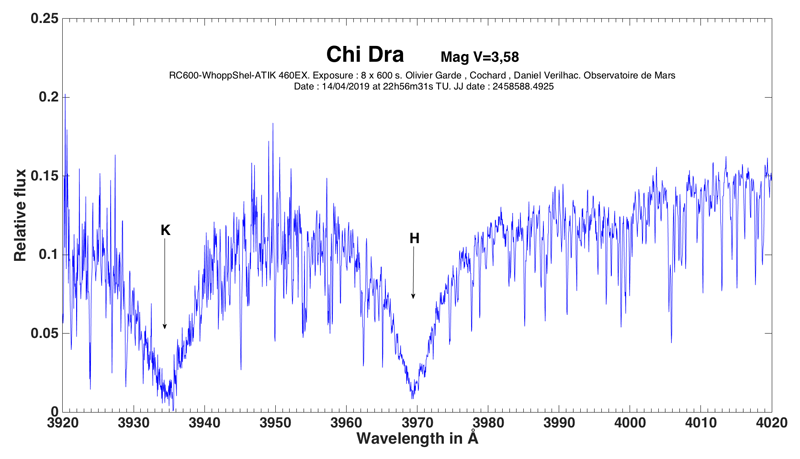Hello,
J'ouvre ici une discussion sur l'intérêt d'observer l'activité chromosphérique des étoiles similaires au Soleil. Il s'agit de détecter et de suivre en fonction du temps l'émission au coeur des raies du CaII H&K d'étoiles actives (il y en a de très nombreuses !). C'est un très vaste et passionnant sujet en devenir, qui pourra être l'objet de programmes pro-am fructueux...
Hi all,
If the observation of hydrogen halpha line concentrates a lot of attention among amateurs (for good reason), we must not forget that our medium and high resolution spectrographs offer many more opportunities...
The study of Ca II H & K emission that can sometimes be observed in spectra of Sun-like stars is one of those subjects, still neglected by amateurs, whereas it is of great astrophysical importance. The Ca II emission is attached to the activity in the chromosphere of the stars (active center, magnetism cycle, ...)
Discussion with professionals, and also the articles published in scientific journals, show that there is a real demand for observations. The subject is exiting and promising. Sophisticated (eShel) or rudimentary spectrograph (UVEX at this stage), and also Lhires III category instruments can be used (for example):

(note the emission in the core of 61 UMa UV calcium doublet lines)
I have been interested for a few years in this question (my work on the improvement of blue sensitivity of eShel spectrograph...). I write a short article that summarizes the actual situation and the issue:
http://www.astrosurf.com/buil/chromospheric_activity/
Many pro-am collaboration seem possibles. The subject is therefore important for the amateurs of spectrography, besides the fascinating fact that it is possible to observe the activity in the stars atmosphere!
I propose reflexion concerning coordination of these observations (data base, campaign...) and I can try establish professional contacts. I encourage you to observe, contact me and publish on this forum or elsewhere your first results for a better demonstration.
Christian Buil
